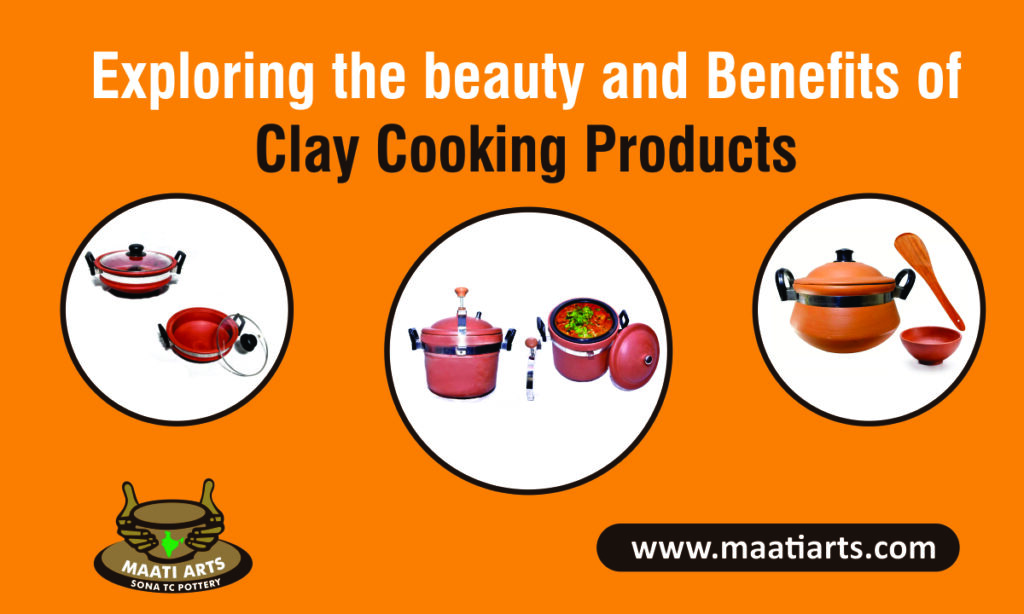Exploring the Beauty and Benefits of Clay Cooking Products

In the realm of culinary arts, where innovation constantly pushes boundaries, there's a certain timeless elegance to traditional methods. Clay cooking products epitomize this blend of tradition and innovation, offering a cooking experience that connects us with our roots while delivering unparalleled flavor and health benefits. From ancient earthenware pots to modern clay cookware, the journey of clay in the culinary world is as rich as the dishes it helps create.
Understanding Clay Cooking
Clay cooking has been practiced for centuries across diverse cultures worldwide. The principle is simple yet profound: cooking food in porous clay pots or utensils over direct heat or in an oven. What makes clay cooking unique is its ability to impart subtle flavors, retain moisture, and evenly distribute heat, resulting in dishes that are tender, aromatic, and exceptionally delicious.
Types of Clay Cooking Products
- Earthenware Pots: These traditional pots are made from natural clay and are typically unglazed, allowing for better moisture retention during cooking. They're perfect for slow-cooking stews, soups, and braises, infusing dishes with rich, earthy flavors.
- Tagines: Originating from North Africa, tagines are clay pots with a distinctive cone-shaped lid. They're designed for slow cooking meats, vegetables, and spices, creating tender and aromatic dishes like Moroccan tagine.
- Clay Bakers: Also known as Romertopf or Schlemmertopf, clay bakers are covered pots designed for baking meats, vegetables, and bread. They trap steam during cooking, resulting in succulent and flavorful dishes with minimal added fats.
- Clay Pots for Rice: Commonly used in Asian cuisines, clay pots for rice offer excellent heat retention, yielding fluffy and perfectly cooked rice with a delightful crust, known as "tahdig" in Persian cuisine.
- Clay Griddles and Pans: These versatile utensils are used for grilling, searing, and frying various foods. They provide even heat distribution and can impart a unique smoky flavor to grilled dishes.
Benefits of Clay Cooking
- Enhanced Flavor: Clay imparts a subtle earthy flavor to dishes, enhancing the taste profile without overshadowing the natural flavors of ingredients.
- Healthier Cooking: Unlike metal cookware, clay pots don't leach harmful chemicals into food. They also require less fat for cooking due to their excellent heat retention and moisture-locking properties.
- Even Heat Distribution: Clay's thermal properties ensure uniform heat distribution, preventing hot spots and allowing for gentle, even cooking, which is ideal for delicate foods.
- Moisture Retention: The porous nature of clay helps trap steam during cooking, keeping dishes moist and tender without the need for excessive liquids or fats.
- Versatility: From stovetop to oven, clay cooking products are versatile and suitable for a wide range of cooking techniques, including braising, baking, roasting, and steaming.
Incorporating Clay Cooking into Modern Kitchens
While clay cooking products are deeply rooted in tradition, they continue to evolve to meet the needs of modern kitchens. Manufacturers now offer a wide range of designs, sizes, and finishes to suit diverse culinary preferences and cooking styles. Additionally, advancements in clay composition and production techniques have improved durability and heat resistance, making clay cookware more practical for everyday use.
Tips for Using Clay Cooking Products
- Seasoning: Before using a new clay pot, it's essential to season it by soaking it in water for several hours or overnight. This helps prevent cracking and enhances its non-stick properties.
- Low to Medium Heat: Clay cookware is best used over low to medium heat settings to prevent thermal shock and prolong its lifespan.
- Preheating: Always preheat clay pots gradually to avoid sudden temperature changes, which can cause cracking.
- Care and Maintenance: Hand wash clay cookware with mild detergent and avoid abrasive scrubbers to preserve its natural properties. Allow it to air dry completely before storing.
Conclusion
In a world where culinary trends come and go, clay cooking products stand as a testament to the enduring appeal of traditional techniques. From ancient civilizations to modern kitchens, the art of clay cooking continues to captivate chefs and food enthusiasts alike, offering a unique blend of flavor, health benefits, and culinary versatility. Whether you're simmering a savory stew or baking a crusty loaf of bread, clay cooking invites you to slow down, savor the moment, and rediscover the joys of cooking with nature's oldest utensil.
Maati Arts clay cooking products offer more than just functionality; they embody a rich heritage of culinary tradition and sustainable living. From the earthy aroma of simmering curries to the tender juiciness of slow-cooked roasts, every meal prepared in Maati Arts clayware is a celebration of flavors and craftsmanship.
So, why not embrace the art of clay cooking and elevate your culinary experience with Maati Arts?


